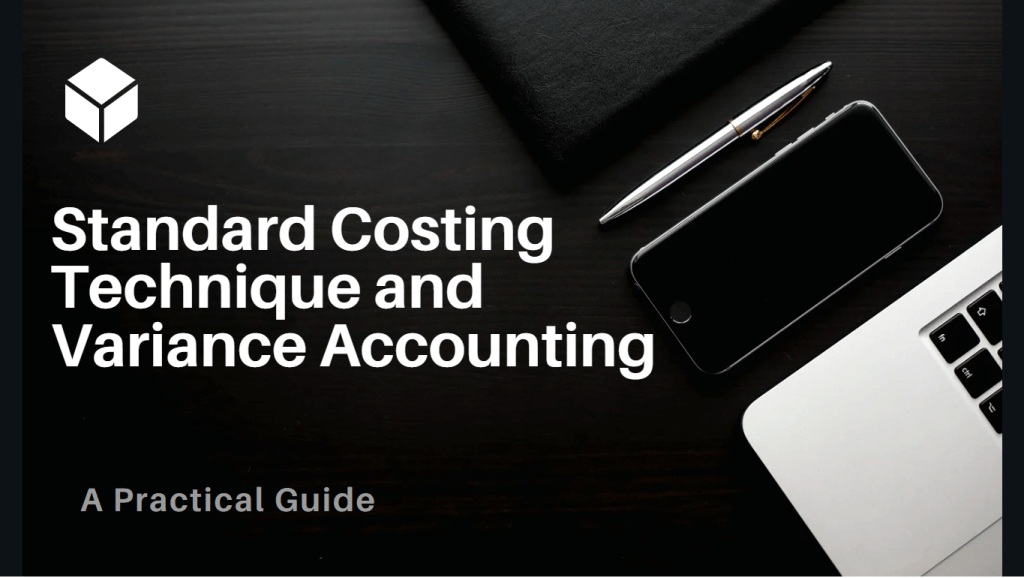
Standard costing and variance accounting are integral components of financial management, enabling businesses to measure and enhance their financial performance. Understanding the concepts of standard costing and variance accounting is crucial for effective financial management. These techniques provide a framework for measuring and improving the financial performance of a company. Let’s explore these concepts with the help of practical examples.
Let’s take a closer look, with a deeper dive into these concepts and more detailed examples.
Standard Costing Defined
Standard costing is a cost accounting method used by businesses to establish predetermined, expected costs for their products or services. These predetermined costs, referred to as standard costs, serve as benchmarks against which actual costs are compared. This technique helps businesses analyze cost variances, manage expenses, and make informed decisions.
Examples of Standard Costing
Let’s explore standard costing with practical examples:
1. Manufacturing Standard Cost
Imagine a bicycle manufacturing company. They set standard costs for producing one bicycle, considering factors like labor, materials, and overhead. The company calculates that the standard cost for one bicycle should be $200, with a breakdown as follows:
- Labor: $50
- Materials: $100
- Overhead: $50
These standard costs act as reference points. If, in reality, it costs $210 to manufacture a bicycle due to increased labor wages, the company identifies a $10 unfavorable labor cost variance.
2. Retail Standard Cost
A retail store uses standard costing for inventory valuation. They estimate that the standard cost of a product should be $20, based on historical data and market trends. If the actual purchase cost of the product is $22, the company records a $2 unfavorable cost variance.
3. Service Standard Cost
Consider a consulting firm that provides marketing services. They establish a standard cost for a particular service, such as developing a marketing strategy, at $5,000. If the actual cost for providing the service is $4,800, the company recognizes a favorable cost variance of $200.
4. Variance Analysis
After determining variances (favorable or unfavorable), businesses investigate the underlying causes. For example, if the bicycle manufacturing company discovers the $10 unfavorable labor cost variance, they may find that employees worked more hours than expected or that their wage rates increased. This insight enables them to take corrective actions or adjust their standard costs for future planning.
In each of these examples, standard costing allows businesses to measure their performance against predetermined cost expectations. It’s a valuable tool for cost control, efficiency improvement, and decision-making in various industries, from manufacturing to retail and services.
Variance Accounting Defined
Variance accounting is a financial management process that involves the analysis of the differences (variances) between the expected or budgeted financial figures and the actual financial results of a business. It is a vital tool for understanding the reasons behind financial discrepancies and making informed decisions to improve performance.
Examples of Variance Accounting
Let’s explore variance accounting with practical examples:
1. Sales Revenue Variance
Suppose a retail store budgets for monthly sales revenue of $100,000. However, at the end of the month, the actual sales revenue is $95,000. This results in an unfavorable sales revenue variance of $5,000. Variance accounting helps identify why this variance occurred.
Upon analysis, the store may find that the variance was due to a lower-than-expected footfall in the store, lower average transaction values, or changes in customer preferences. This insight can guide marketing strategies and sales efforts for the following months.
2. Cost Variance in Manufacturing
In a manufacturing company, they set a budgeted cost of $50 for producing a specific component. However, the actual cost turns out to be $55. This leads to an unfavorable cost variance of $5. Variance accounting allows the company to dig deeper.
The analysis reveals that the variance is primarily caused by an increase in the cost of raw materials. The company can respond by exploring alternative suppliers, negotiating better prices, or optimizing material usage to control costs in the future.
3. Labor Cost Variance
Consider a service-based consulting firm that budgets for labor costs of $20,000 to complete a project. But when the project concludes, the actual labor cost is $18,000, resulting in a favorable labor cost variance of $2,000. Variance accounting investigates the reasons.
The firm discovers that the project was completed more efficiently than expected, with fewer labor hours required. They can use this knowledge to improve project planning, allocate resources more effectively, and bid competitively on future projects.
4. Material Usage Variance
In a construction company, they set a budgeted cost of $5,000 for a specific project, including materials. However, the actual cost is $5,500 due to increased material consumption. This results in an unfavorable material usage variance of $500. Variance accounting uncovers the root causes.
Upon analysis, the company realizes that the project’s design required more materials than initially anticipated. With this insight, they can refine their project estimating process and minimize future material variances.
In each of these examples, variance accounting provides a framework for understanding the reasons behind financial disparities. It enables businesses to take corrective actions, refine their budgeting and planning processes, and enhance overall financial performance.
Conclusion: Unleashing the Power of Standard Costing and Variance Accounting
Standard costing and variance accounting provide you with the ability to measure and control your costs effectively. By establishing a comprehensive framework for evaluating financial performance and pinpointing deviations, these tools empower you to make data-driven decisions.
In the dynamic world of business, the recipe for financial success lies in your ability to understand, adapt, and take proactive steps. Standard costing and variance accounting are your trusted companions on this journey, helping you maintain control, optimize costs, and ensure the financial health of your business.
Check out other business articles here.